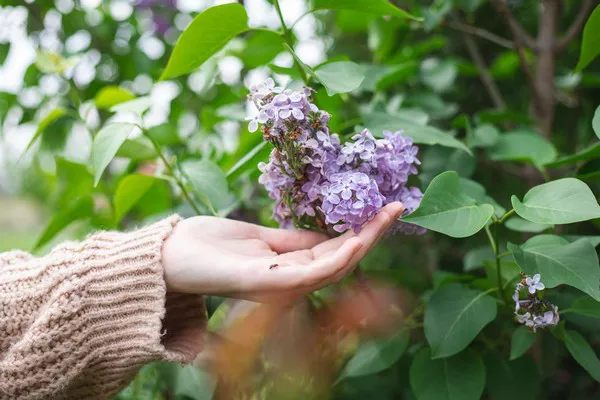Pests can be a relentless nuisance when it comes to growing basil. These aromatic herbs are a favorite among gardeners and home cooks, but they are also a target for a variety of pests. To maintain healthy and thriving basil plants, it’s essential to take proactive measures to keep pests at bay.
Understanding Basil Pests
Before we dive into pest control methods, it’s crucial to familiarize yourself with the common culprits that threaten basil plants. Basil can fall victim to a range of pests, including aphids, whiteflies, spider mites, cutworms, and slugs. Each of these pests presents unique challenges, so identifying them early is the first step toward successful pest management.
Aphids: Aphids are tiny, sap-sucking insects that can quickly multiply and damage basil leaves. They are usually green, yellow, or black and cluster on the underside of leaves.
Whiteflies: These small, white, moth-like insects feed on basil leaves and can transmit plant diseases. They are typically found on the undersides of leaves.
Spider Mites: Spider mites are minuscule pests that leave tiny webs on basil plants. They suck sap from the leaves, leading to discoloration and stunted growth.
Cutworms: Cutworms are caterpillars that cut through the basil stems at the base, causing the plant to collapse.
Slugs: Slugs are nocturnal pests that feed on basil leaves, leaving irregular holes and slime trails in their wake.
Preventing Pests from Infesting Basil
Healthy Soil and Strong Plants
A strong foundation is essential in pest prevention. Start by ensuring your basil plants are grown in well-draining soil rich in organic matter. Healthy soil promotes robust root systems, making it less likely for pests to weaken your plants. Water your basil plants consistently, but avoid overwatering, as overly moist soil can attract certain pests like slugs.
Proper Spacing
Overcrowded basil plants can create ideal conditions for pests by limiting airflow and sunlight penetration. Space your basil plants appropriately, allowing for good air circulation between them. Adequate spacing also makes it easier to inspect and manage your plants for signs of infestation.
Crop Rotation
Rotate your basil crops each growing season to prevent the buildup of pest populations in the soil. By changing the planting location, you reduce the risk of pests becoming established in the same area year after year.
Companion Planting
Companion planting involves growing basil alongside other plants that naturally deter pests. Basil pairs well with tomatoes, peppers, and marigolds, which can help keep certain pests, such as aphids and whiteflies, at bay. These companion plants emit scents or compounds that deter pests from attacking your basil.
Mulch
Applying organic mulch around your basil plants serves multiple purposes. It helps regulate soil temperature, conserves moisture, and prevents weed growth. Additionally, mulch acts as a barrier, making it harder for pests like cutworms to reach the base of your basil plants.
Controlling Pests on Basil
Hand-Picking
One of the simplest and most effective methods of pest control is hand-picking. Regularly inspect your basil plants for signs of infestation and manually remove the pests. This method is particularly useful for larger pests like cutworms and slugs. Dispose of the pests away from your basil plants to prevent reinfestation.
Watering Techniques
Watering your basil plants with a strong stream of water can dislodge pests like aphids and whiteflies from the leaves. Use a garden hose with a spray attachment to gently wash away the insects. Repeat this process as needed, especially if you notice a significant pest presence.
Neem Oil
Neem oil is a natural and effective pesticide that can deter a wide range of basil pests. Mix neem oil with water according to the package instructions and spray it on your basil plants, focusing on the undersides of the leaves where pests tend to hide. Neem oil disrupts the pests’ feeding and reproductive cycles.
Insecticidal Soap
Insecticidal soap is another environmentally friendly option for pest control. Purchase a commercial insecticidal soap or make your own by mixing mild liquid soap with water. Spray the solution directly on the pests, but avoid saturating your basil plants. This method is effective against soft-bodied pests like aphids and whiteflies.
Beneficial Insects
Introducing beneficial insects to your garden can help keep pest populations in check. Ladybugs, lacewings, and parasitic wasps are natural predators of many basil pests. You can attract these beneficial insects by planting nectar-rich flowers nearby or purchasing them from garden supply stores.
Homemade Pest Repellents
Homemade pest repellents can also be effective in deterring basil pests. Garlic and chili pepper sprays are popular options. To make a garlic spray, blend several cloves of garlic with water and strain the mixture into a spray bottle. For a chili pepper spray, mix finely chopped hot peppers with water and a few drops of dish soap. Both sprays can be applied to basil leaves to discourage pests.
Conclusion
Basil is a delightful herb to cultivate, and with the right pest control strategies in place, you can enjoy a thriving and pest-free basil garden. By practicing preventive measures such as healthy soil, proper spacing, and companion planting, you can reduce the likelihood of pests infesting your basil plants. In cases where pests do appear, options like hand-picking, neem oil, insecticidal soap, beneficial insects, and homemade repellents provide effective means of pest management. With diligence and care, your basil garden can flourish, providing you with a bountiful harvest of this aromatic herb for culinary delight.


